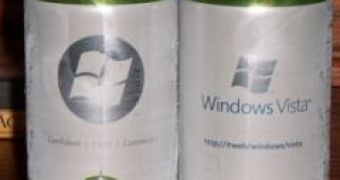Regarded as the anti-Linux poster child, Microsoft's business model is at the opposite end of the spectrum, when compared to open source solutions. And nowhere is this more relevant than when it comes to the company's proprietary platform. The Windows client is not only one of Microsoft's flagship products together with the Office System, but also the main cash cow. And the reason behind the Windows Client Division profitability is the business strategy build around the proprietary Windows operating system.
At the opposite pole, there are the open source community and the Linux platform. Increasingly being accepted as a mainstream alternative to Windows, the Linux operating system is generally offered for free with customers paying for support. Moreover, open source means that access to the Linux bits are free and that there are no restrictions when it comes down to duplicating, reselling, tampering with the code etc. By contrast each Windows licence, that can cost up to $399 for the Windows Vista Ultimate SKU, only offers the rights to use the operating system on a single machine.
One scenario, that is continually proliferated for Windows, is a potential embracing of open source. Microsoft has shown a bitter disinterest in such a move in the past, and has also reiterated its position with every new occasion. Case in point: Microsoft's Chief Executive Officer, Steve Ballmer, speaking at the company's annual Minority Student Day in Redmond. Ballmer answered a question inquiring of the possibility of an open source Windows platform with a firm NO.
"Well, what does that mean? An open-source version of Windows would mean not only would we publish Windows source code, we would make it free. That's what open source means. We wouldn't be hosting Minority Student Day if we open-source Windows because we wouldn't have enough profit to pay people, let alone invite in people from the community. I'm not saying open-source is a bad thing, but it doesn't pay the bills in this company, so we can't embrace that way of doing things. ... We give out free soda pop to everybody who works here. We make our stuff free, people gotta give back the soda pop -- it's just inconsistent with what we do around here," Ballmer explained as cited by SeattlePI.
Even before Windows Vista was released to manufacturing back in 2006, Microsoft had made available rebranded Talking Rain sparkling water Lemon-Lime flavored as Vista soda. And don't imagine for a minute that the consumption of free beverages over in Redmond is not costing Microsoft a fortune. No less than 7,899,660 cans of juice are drank every year. Do you know how many Windows Vista Ultimate licenses Microsoft has to sell to pay for that?
"Microsoft campus stats: 18,573 Average number of customers served in cafeterias daily, 2637 slices of pizza consumed per day; 7,464,456 cans of soda consumed per year; 7,899,660 cans of juice consumed per year; 3,520,536 cartons of milk consumed per year; 2300 passengers ride the MS shuttles everyday and 10,500 phone calls come into the Microsoft switchboard everyday," revealed Frank Arrigo, Microsoft Corporate Director - WW Partner Lead and ISV DE Role Owner.

 14 DAY TRIAL //
14 DAY TRIAL //